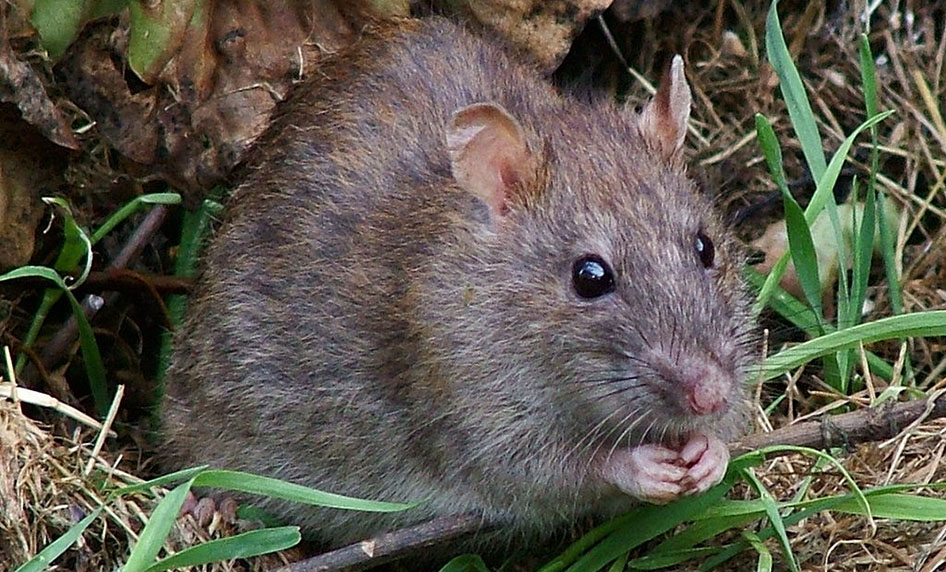- Home
- Research
- Optical Molecular Diagnostics and System Technology
- Research results
- Rat plague in Vienna: Infectious disease researchers detect multidrugresistant pathogens in urban Norway Rats
Rat plague in Vienna: Infectious disease researchers detect multidrugresistant pathogens in urban Norway Rats

09.09.2019
Rats could pose a major threat to the spread of multidrug-resistant germs in cities. This is the conclusion reached by a team of researchers from Austria and Germany after studying rat populations in Vienna. InfectoGnostics researchers from Jena conducted genetic analyses of the samples and were able to show that the animals carry high-risk pathogens that are resistant to most antibiotics. The results of the study were published in August in the infectious disease journal Eurosurveillance (DOI: 10.2807/1560-7917.ES.2019.24.32.1900149).
Due in part to the increasingly frequent warm and dry summers, reports of rat infestations are increasing in European cities – both in Germany and Austria. In Vienna, an international team of researchers has now taken a closer look at which pathogens could be spread by the rodents. Between 2016 and 2017, the scientists had a total of 76 Norway rats (Rattus norvegicus) trapped with live traps at Vienna’s Karlsplatz square and the Danube Canal promenade. Both locations were chosen purposefully: On the one hand, the animals come into contact with humans more frequently in these places. On the other hand, there were increasing reports that the animals, which are actually nocturnal, were also seen at these locations during the day – an indication of an excessively large rat population.
Characterization of the bacteria at the Jena research campus
Samples from the intestinal tract and nasopharynx of 62 animals were later examined in the laboratory. In total, antibiotic-resistant bacteria were identified in 39 rats (62.9 percent), of which 12 animals had multidrug-resistant variants of the pathogens. “We found bacteria that were already resistant to up to four classes of antibiotics. These highly resistant pathogens pose a great danger, as they can also transfer their resistance genes to other bacterial species,” explains InfectoGnostics researcher Prof. Dr. Ralf Ehricht from the Leibniz Institute for Photonic Technologies (Leibniz-IPHT). In the study, the team led by Prof. Ehricht and Dr. Stefan Monecke (also Leibniz-IPHT) performed the genetic analysis of the Viennese sample material using, among other tools, the CarbDetect-AS-2 kit developed at the research campus.
Viennese veterinarians: frequency of multidrug-resistant bacteria is a cause for concern
According to the study’s lead authors from Vetmeduni Vienna, the exact interaction between multidrug-resistant germs in rats and the risk to human health has not yet been clarified, but the frequency is certainly worrying. The veterinarians continued, “For example, one of the rats we studied was caught in a green area that is used as a sleeping place by homeless people in the summer. This particular situation increases the risk of transmission of the resistant bacteria. In principle, however, a variety of other scenarios are conceivable for transmission. Controlling rats, as well as other rodents such as mice, therefore remains an important public health priority in cities.”
Rats – a dangerous disease vector
In terms of the spread and development of multidrug-resistant germs, Norway rats are particularly relevant. Rats are considered the most prolific and widespread urban pest species. They feed on human waste and colonize the sewage system, often interacting with human feces and ingesting and spreading multidrug-resistant bacteria. Little is known about the exact role of rats in the epidemiology of multidrug-resistant germs. Therefore, the present study provides an important contribution to improve the knowledge in this field.
For the study, researchers from the Vetmeduni Vienna (Research Institute of Wildlife Ecology, Institute of Microbiology), the Austrian Agency for Food Safety (AGES), the Free University of Berlin and the Leibniz-IPHT at the InfectoGnostics Research Campus Jena cooperated.
In the image above:
A Norway rat (Rattus norvegicus) – the animals can be vectors of multidrug-resistant bacteria (Photo: Reg Mckenna, CC BY 2.0)
